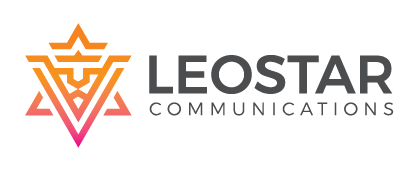5 Ways to Automate and Personalize Your Email Campaigns
Today, our inboxes are jam-packed with emails. However, nailing your email marketing approach is still a game-changer for businesses to connect with customers, nurture leads, and make sales. So, how do you make your emails pop in the ocean of messages? The answer is Email Campaigns with Automation and Personalization.
When you automate your email campaigns and customize them for each person, you can create a more interesting and efficient email marketing strategy. this will lead more people to open your emails, more clicks and ultimately boost your business profit.
Ready to win your email marketing game? Then, let’s explore five essential email strategies that combine the efficiency of automation with the personalized touch that will definitely work like a MAGIC.
1. Segment Your Audience for Precision Targeting
Why It Matters: Segmenting your email list is the first and most crucial step in personalization. By dividing your audience into distinct groups based on various criteria, you can tailor your messages to meet their specific needs and interests. This approach increases the relevance of your emails, leading to higher engagement rates and improved overall performance.
How to Implement:
- Demographic Segmentation: Start by categorizing your audience based on demographic factors such as age, gender, location, and income level. For example, a travel agency could segment its list into “adventure seekers,” “luxury travelers,” and “family vacationers” to deliver targeted offers and travel recommendations.
- Behavioral Segmentation: Segment your list based on user behaviors, such as previous purchases, browsing history, or email interactions. An e-commerce store could create segments for “frequent buyers,” “browsers who haven’t purchased,” and “one-time buyers” to send personalized product recommendations and special offers.
- Lifecycle Segmentation: Tailor your emails according to the recipient’s stage in the customer journey. For instance, “new subscribers” might receive a welcome series introducing your brand, while “long-term customers” could get loyalty rewards and exclusive previews of upcoming products.
Example: A fitness brand might segment its audience into “beginners,” “intermediate,” and “advanced” fitness enthusiasts. Each segment would receive tailored workout tips, product recommendations, and motivational content suited to their fitness level.
2. Use Dynamic Content to Customize Messages
Why It Matters: Dynamic content takes personalization to the next level by allowing you to customize various elements of your emails based on individual recipient data. This approach ensures that each email feels uniquely relevant to the recipient, boosting engagement and response rates.
How to Implement:
- Personalized Greetings: Use dynamic fields to address recipients by their first names. This small touch can make your emails feel more personal and engaging. For instance, instead of “Dear Customer,” use “Hi Rajesh” for a more personalized greeting.
- Product Recommendations: Display products or services based on the recipient’s previous purchases or browsing behavior. For example, a tech retailer could show recommendations for accessories that complement a recent gadget purchase.
- Tailored Content Blocks: Customize different sections of your email according to user preferences. If a subscriber has shown interest in both skincare and haircare products, include content and offers related to both categories.
Example: A bookstore could use dynamic content to show book recommendations based on a reader’s previous purchases. For a customer who frequently buys historical fiction, the email could feature new releases in that genre along with a personalized discount offer.
3. Leverage Triggered Emails for Timely Communication
Why It Matters: Triggered emails are automated messages sent in response to specific actions or events. They are highly effective because they deliver timely and relevant content that aligns with the recipient’s recent interactions. This immediacy can significantly boost engagement and conversions.
How to Implement:
- Welcome Emails: Automatically send a series of welcome emails when someone subscribes to your list. This sequence can include a thank you message, an overview of what to expect, and a special introductory offer. For example, an online clothing retailer could send a welcome email with a discount code for new subscribers to encourage their first purchase.
- Abandoned Cart Reminders: Send follow-up emails to users who have added items to their shopping cart but haven’t completed the purchase. These emails often include reminders and incentives, such as a discount or free shipping, to encourage the recipient to finalize their purchase. For instance, an online electronics store might send an abandoned cart email highlighting the items left in the cart along with a limited-time discount.
- Re-Engagement Emails: Target subscribers who haven’t interacted with your emails for a while. Craft a compelling re-engagement email offering special incentives or highlighting new products or services to rekindle their interest. An example could be a subscription service that offers a special discount to users who have been inactive for a few months, encouraging them to rediscover the service.
Example: An online course provider might use triggered emails to remind users about a webinar they registered for but haven’t attended. The email could include a calendar invite, additional resources, and a personalized message to increase attendance rates.
4. A/B Test to Optimize Performance
Why It Matters: A/B testing, or split testing, allows you to compare two versions of an email to determine which one performs better. By experimenting with different elements of your emails, you can optimize your content for higher engagement and better results.
How to Implement:
- Test Subject Lines: Experiment with various subject lines to see which one generates higher open rates. Try different styles, lengths, and tones to identify what resonates most with your audience. For instance, test a straightforward subject line like “20% Off Your Next Purchase” against a more enticing one like “Exclusive 20% Off Just for You!”
- Test Email Content: Try different layouts, images, and copy to determine what captures attention and drives action. For example, test a simple text-based email versus a richly designed email with visuals and multimedia to see which format leads to more clicks.
- Test CTAs: Experiment with different calls-to-action (CTAs) to find out which ones drive the most conversions. Test various phrases, button colors, and placements to see what encourages users to take the desired action. An example could be testing “Shop Now” versus “Discover More” to see which CTA generates more clicks.
Example: An online retailer might A/B test two versions of a promotional email: one with a large, eye-catching button and another with a smaller, text-based link. By analyzing the results, they can determine which design leads to higher click-through rates and adjust future emails accordingly.
5. Analyze and Refine Your Campaigns Continuously
Why It Matters: Continuous analysis is essential for maintaining and improving the effectiveness of your email campaigns. By regularly reviewing performance metrics and gathering feedback, you can make data-driven decisions and refine your strategy to achieve better results over time.
How to Implement:
- Monitor Key Metrics: Track important metrics such as open rates, click-through rates, conversion rates, and unsubscribe rates. Analyzing these metrics helps you understand how well your emails are performing and where improvements are needed. For example, if you notice a decline in open rates, it might be time to revisit your subject lines or send times.
- Customer Feedback: Use surveys, feedback forms, or direct responses to gather insights from your subscribers. This feedback can provide valuable information on what your audience likes or dislikes about your emails, helping you make necessary adjustments.
- Iterative Improvements: Based on your analysis and feedback, make ongoing improvements to your email campaigns. Regularly update your content, design, and strategy to keep your emails fresh and relevant. For instance, if certain types of content perform better, consider incorporating more of that content into future emails.
Example: A non-profit organization might analyze the performance of its fundraising emails and discover that emails sent on weekends have higher engagement. They could then adjust their sending schedule to optimize results and enhance their fundraising efforts.
The Email Marketing Automation and Personalization Advantage
By embracing automation and personalization, you can transform your email campaigns from generic blasts to targeted messages that resonate with your audience. This translates to:
- Increased engagement: Personalized emails are more likely to be opened, clicked on, and acted upon.
- Improved brand loyalty: When subscribers feel valued and understood, they are more likely to connect with your brand and become loyal customers.
- Boosted sales and conversions: Targeted emails with strong CTAs can significantly increase your sales and conversions.
- Saved time and resources: Automation frees up your time to focus on other marketing initiatives while still delivering impactful email campaigns.
The Wrap Up
Entering the world of effective email marketing can initially seem daunting, but with the right strategies, it can become a rewarding endeavor. By incorporating these strategies, you can improve your emails from generic messages to personalized communication that connects with each individual. Remember, the aim is to nurture relationships, offer value, and ultimately, convert subscribers into loyal fans of your brand.
Let, LeoStar’s Email Marketing Services be your partner in creating automated and customized email campaigns. Our easy-to-use services will simplify audience segmentation, create engaging subject lines, and will monitor your results in real-time. Just imagine, sending emails that feel like they were crafted specifically for each subscriber, all while saving you valuable time and resources.
If you want to have a successful email marketing campaign, contact LeoStar today and get the first-class impact of email automation and personalization. Trust me, you will see how swiftly you can strengthen relationships, drive conversions, and achieve your email marketing goals.
So, don’t hesitate- get this opportunity to take charge of your inbox and see your business flourish with LeoStar’s support.






